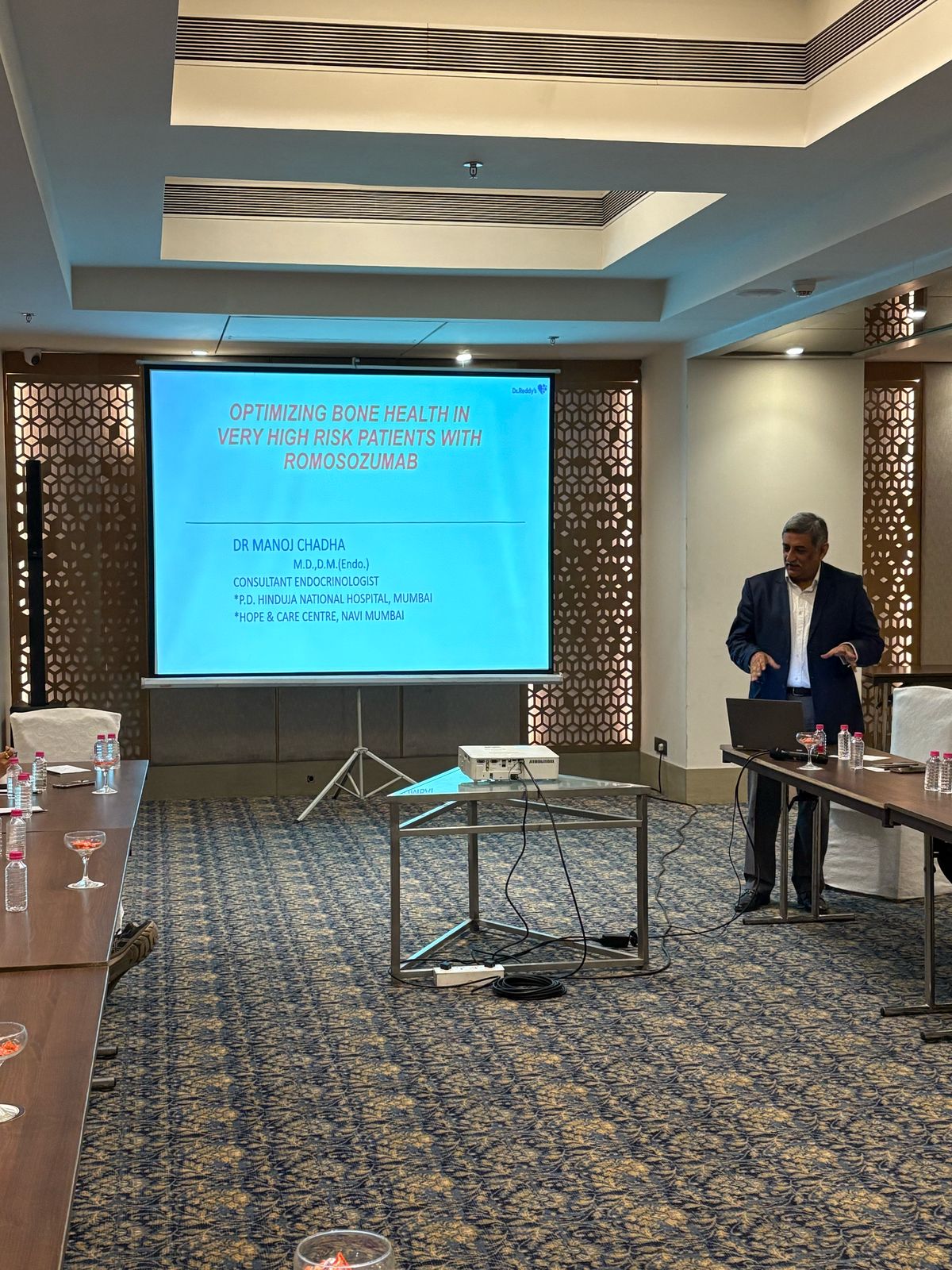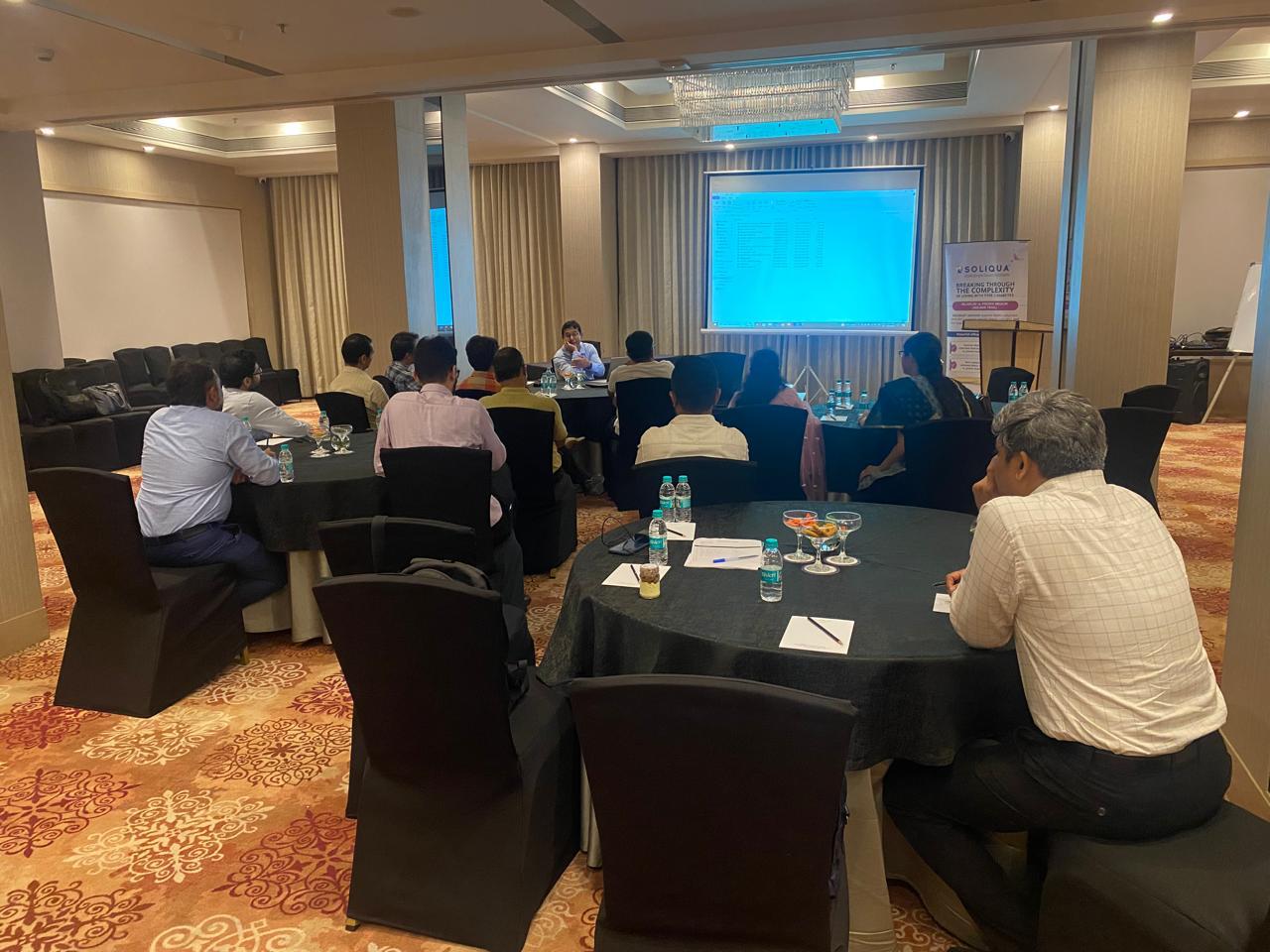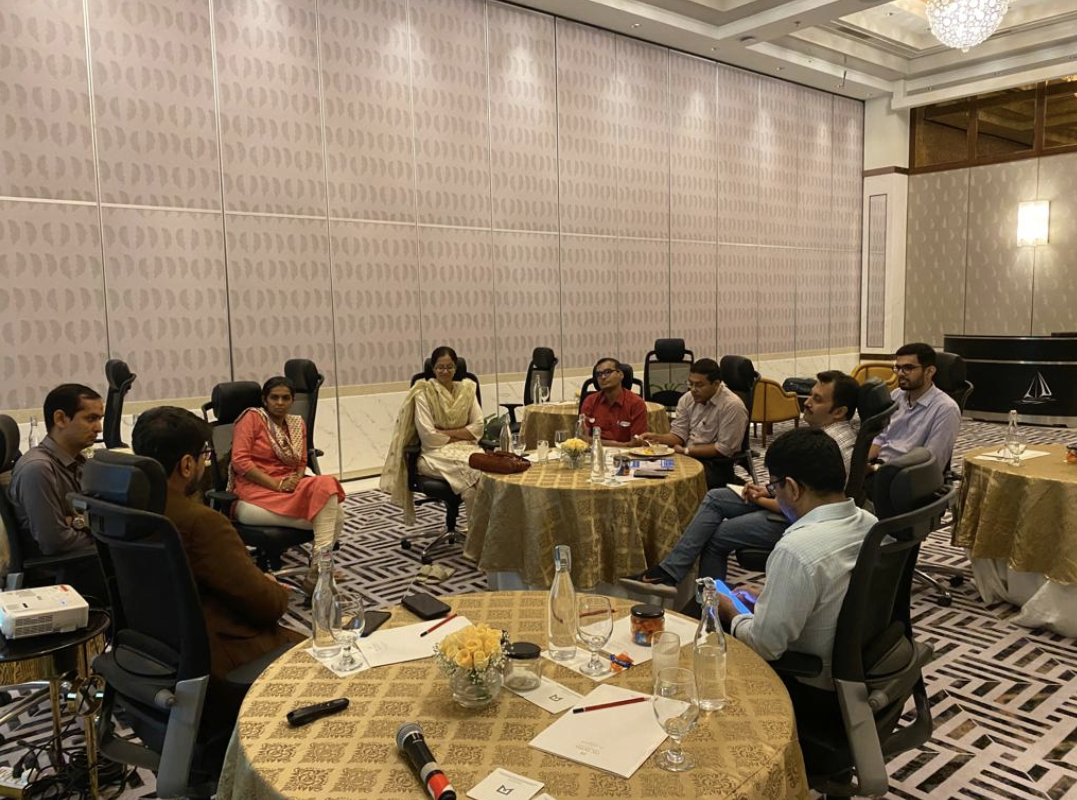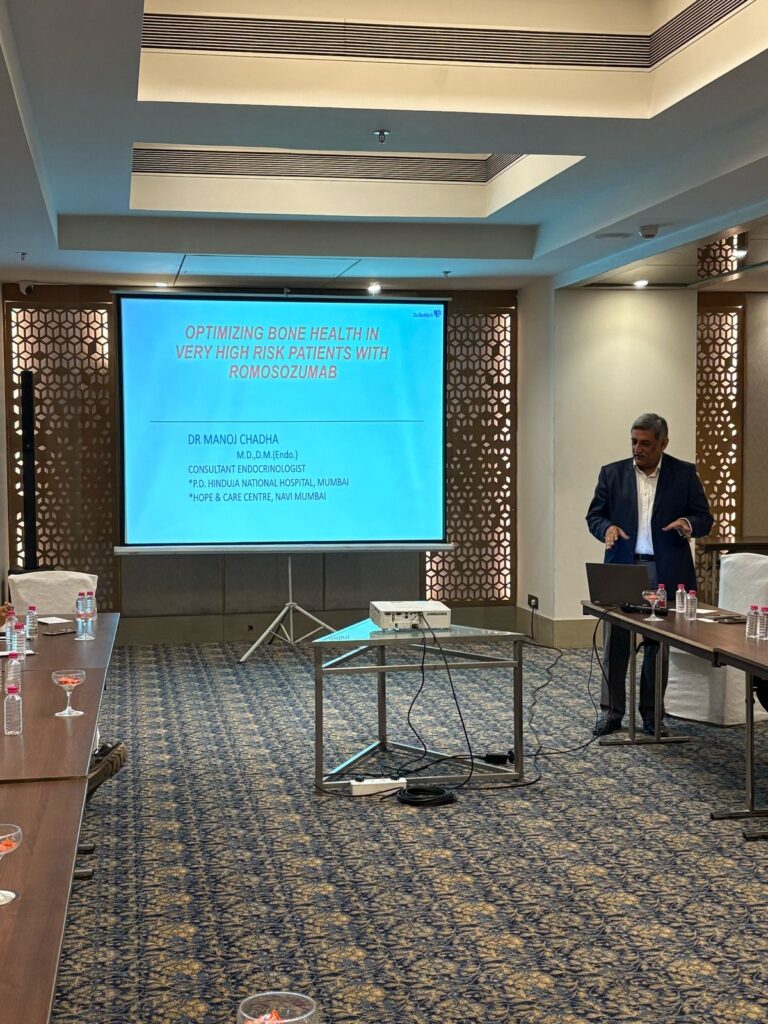
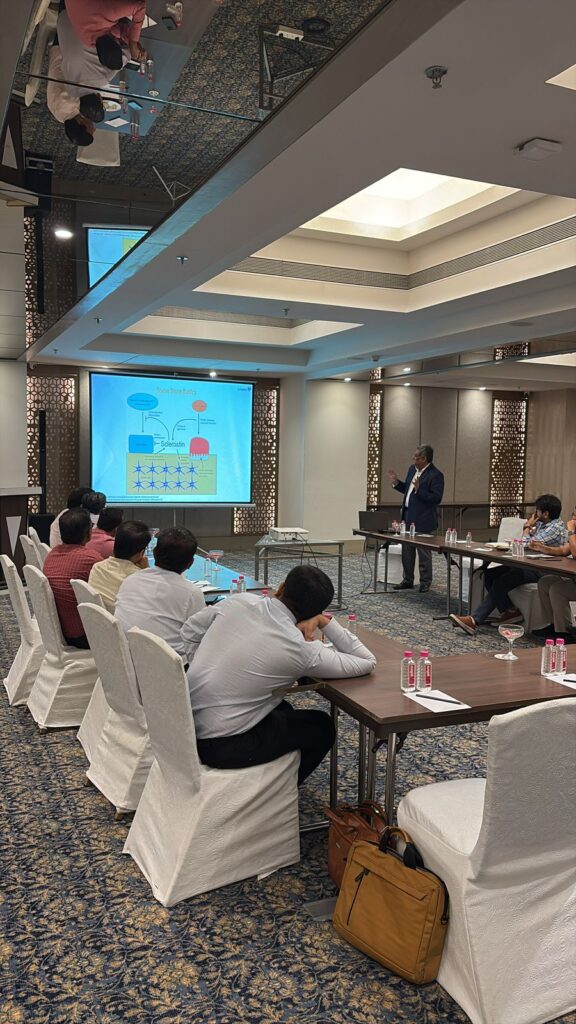

The Gujarat Endocrine Club conducted its monthly EndoClub meeting on 1st April 2025 at Taj Vivanta, Ahmedabad. The session featured an insightful talk by Dr. Manoj Chaddha, Senior Endocrinologist, on the topic:
“The Role of Romosozumab in the Management of Osteoporosis.”
The evening witnessed a lively and engaging discussion among endocrinologists, with valuable clinical perspectives shared on this novel therapeutic option.
The event was sponsored by Dr. Reddy’s Laboratories.
For those interested, detailed notes on the topic are available at:
Some useful pearls by Dr. Manoj Chaddha
- “Long bone fracture is an essential criteria for diagnosis of osteoporosis in children”
- “Wait and Watch is the best endocrine test”
- “Fracture begets a fracture”
Key criteria for defining treatment failure with user of Osteoporosis medications
- Inadequate fracture risk reduction
- Two or more fragility fractures (e.g., vertebral, hip, or wrist) during treatment are considered treatment failure[2][3][4].
- One major fracture (e.g., hip or clinical vertebral) within the first year of therapy in a compliant patient[5].
- Bone mineral density (BMD) decline
- A ≥5% decrease at the lumbar spine or ≥4% decrease at the femur on two consecutive DXA scans[4].
- Biochemical marker response
- For anti-resorptives (e.g., bisphosphonates): <25% reduction in βCTX or PINP (bone turnover markers) after 6 months[2][4].
- For anabolic agents (e.g., teriparatide): <25% increase in PINP[4].
- Exclusion of contributing factors
- Confirm adherence to therapy (noncompliance is a leading cause of apparent failure)[1][4].
- Rule out secondary osteoporosis (e.g., hypercalciuria, malignancy, vitamin D deficiency)[1][2].
Important considerations
- Timeframe: At least 6–12 months of compliant therapy must precede fracture occurrence to assess efficacy[1][3].
- Fracture type: Ankle, hand, or skull fractures are not considered osteoporotic fragility fractures[4].
- BMD interpretation: Spine BMD may artifactually increase due to vertebral compression fractures; hip measurements are more reliable[1].
Management steps for suspected failure
- Reassess adherence and address barriers (cost, side effects)[1].
- Screen for secondary causes with lab tests (calcium, vitamin D, TSH, PTH)[1][2].
- Switch to a different drug class (e.g., from bisphosphonates to anabolic agents)[2][5].
Citations: [1] https://www.ccjm.org/content/ccjom/72/11/1033.full.pdf [2] https://www.esceo.org/sites/esceo/files/pdf/Diez-Perez%20Treatment%20failure%20in%20osteoporosis.pdf [3] https://pubmed.ncbi.nlm.nih.gov/22836278/ [4] https://www.menopause.org.au/members/ims-menopause-live/treatment-failure-in-osteoporosis [5] https://pubmed.ncbi.nlm.nih.gov/21211750/ [6] https://www.racgp.org.au/afp/2012/march/osteoporosis-pharmacological-prevention-and-manage [7] https://www.mayoclinic.org/diseases-conditions/osteoporosis/in-depth/osteoporosis-treatment/art-20046869 [8] https://my.clevelandclinic.org/health/diseases/4443-osteoporosis [9] https://emedicine.medscape.com/article/330598-treatment [10] https://www.bonehealthandosteoporosis.org/wp-content/uploads/Bone-Basics_Osteoporosis-Medicines_update.pdf [11] https://medlineplus.gov/ency/patientinstructions/000502.htm [12] https://jamanetwork.com/journals/jamanetworkopen/fullarticle/2824673 [13] https://www.bonehealthandosteoporosis.org/patients/treatment/medicationadherence/ [14] https://www.nature.com/articles/boneres201325 [15] https://osteoporosis.ca/medications-that-can-cause-bone-loss-falls-and-or-fractures/
